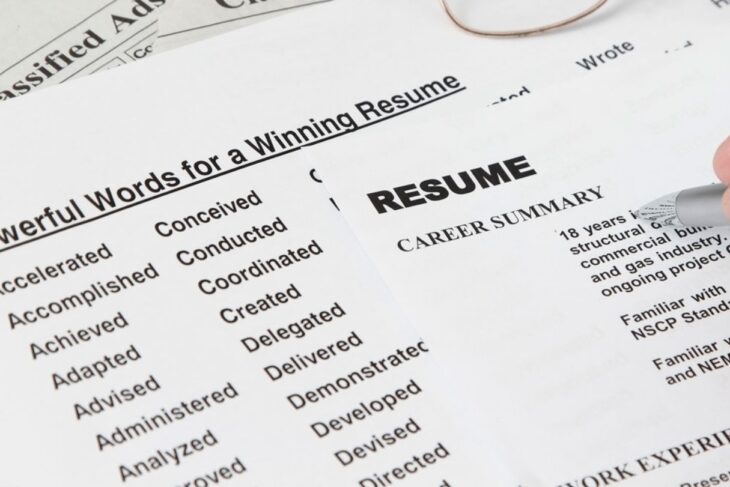In this modern society, in 2024, there are thousands of job opportunities out there in the world. You can either get a job at an office or one that allows you to work from home. With so many opportunities and each of them being different in some way, it can be complicated to pick the right one. But, even if you do decide to pick just one that does not necessarily mean that you will get hired. To increase the possibility of getting hired, you will need a good resume.
However, a good resume is not as easy as most people think. Sure, it might look good, but it may not be enough to catch the attention of an employer. People need to start being a little bit more creative when building a CV. This is a portfolio where a person needs to express their best skills and characteristics.
A portfolio needs to be modified in such a way so that every single bit of information is clear while providing all the information that an employer needs. The portfolios that have not to achieve this, usually end up in the trash. To help some of you avoid this from ever happening, I decided to write this article and share all the tips I have about writing resumes.
Contents
1. Keywords for resumes are essential

Source: CareerBuilder
One of the most important things everyone has to understand is the fact that resumes require keywords just as online websites do. There are so many different search engines and algorithms that go through thousands of resumes in a matter of seconds. These algorithms are optimized to find the right keywords, skills, and characteristics.
These programs are used to help employers avoid spending days or even weeks sorting through thousands of different portfolios. The algorithm can do the sorting for the employer in a matter of seconds. In the end, those 1000 files will turn into just a couple or a dozen.
Once the number of portfolios has been greatly reduced, the employer can sift through them and find the perfect potential employee.
So, if you do want to get past the algorithm and into the hands of a real person, you will have to optimize your CV with keywords.
How do you do that? Well, it certainly is not difficult. Keywords will depend on the industry you want to work in. For example, if your software engineer then you will have to use words such as coding, programmer, code, etc.
2. Look for inspiration

Source: CasinoBeats
The reality is that most of the people in this world are not exactly very creative. And that is completely normal. A software engineer will never be as creative as an art student. So, it makes sense that another student will create a much more creative portfolio than someone who does coding for living.
However, just because you do not feel creative, does not mean that you are not. Give your portfolio a couple of tries and see whether you will be able to create something that is unique. Something that will pull the attention of an employer.
But, if you are still having trouble, there are still several other alternatives. Still have the option of looking through resumes of different people where you will be able to find some kind of inspiration. Of course, this does not mean that you should entirely copy someone’s CV, but you can use the type of padding they used, paragraphs, their font, and other elements that make the overall look of this file a little bit more attractive.
To do this, all you have to do is just get online. There are so many people out there that are willingly sharing their portfolios to help others. If you cannot seem to find inspiration online, I would suggest asking your close friends or close family members about their resumes and maybe you will manage to get creative.
If none of this works for you, there is still always the option of using a free template or even a paid one. But, in reality, free resume templates are just as good as any other that has a price as suggested by Ladders.
3. Use the right font

Source: Better Than Success
Believe it or not, but the font used in a resume may actually have a huge impact and can increase the chances of someone checking out the file. There are many professional fonts out there. Many of them aim to be attractive and readable. The person reading the font needs to sift through the text as quickly as possible. If the font is bulky, tiny, or unconventional, the person will have trouble going through the blocks of text and might give up.
Finding professional fonts is easier than ever. All you have to do is just open up Google and do a little bit of research. Although, I also have a couple of suggestions. Calibri is a great option and is commonly used in the business world. Cambria, Arial, Helvetica, and Didot are also very frequently used. Whichever of these are used, the employer will appreciate that.
4. You most important achievements and skills first

Source: Ian Martin
Every resume requires a proper introduction. Randomly listing different skills and abilities does not make sense. But, it is also very important to be careful with the length of the introduction. If it is too long, the algorithm might throw it away. It needs to and as quickly as possible, so the person reading it can start reading through the skills, achievements, and characteristics that are on the portfolio.
This is why it is essential to put all of your most vital information in the second paragraph. Naturally, you cannot put this information in the first paragraph because that should be the introduction.
5. Keep it simple

Source: ITS Bar Skills Courses
People commonly make the mistake of overfilling their resume with too much information. There simply is no need to over complicate things. Keep it simple and keep information concise. This will ensure that someone will look through your resume.
By utilizing all of these tips I mentioned above, your chances of getting hired might increase greatly. But, make sure you do not forget to be patient. Employers usually take their time with quality portfolios.
